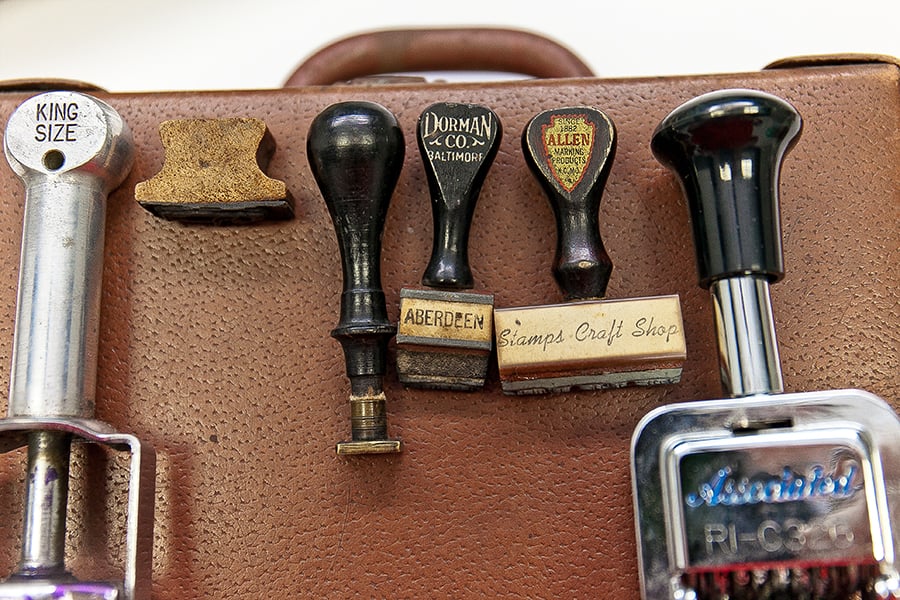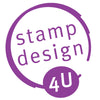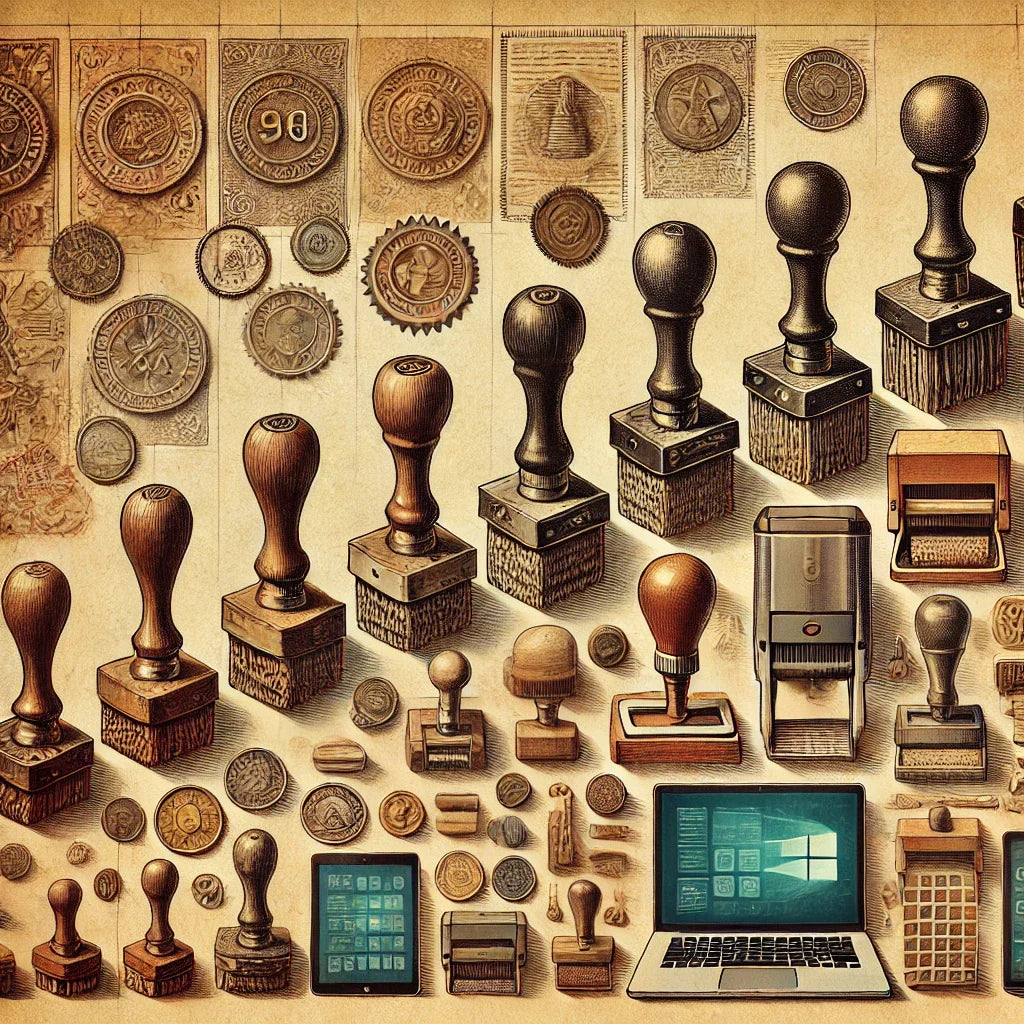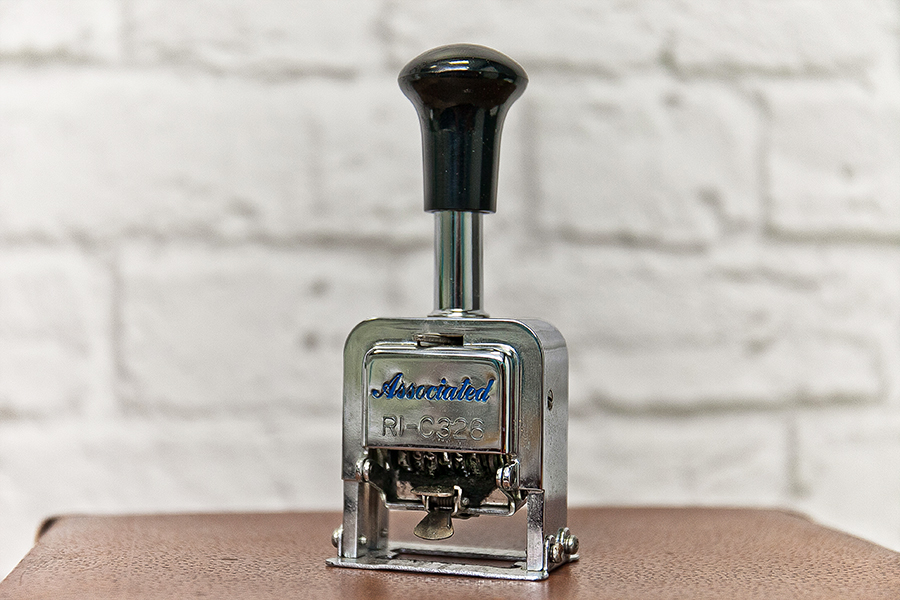The History of Rubber Stamps in the U.K.
Rubber stamps have become an essential tool for businesses, artisans, and hobbyists, but their history is as fascinating as it is practical. From humble beginnings to becoming a staple of everyday office life and creative expression, the journey of rubber stamps in the U.K. mirrors industrial advancements and social change.
Origins of the Rubber Stamp
The invention of the rubber stamp is credited to Charles Goodyear, an American chemist who discovered the vulcanisation process for rubber in 1839. This process made rubber durable and moldable, opening up a range of applications, including stamp making.
Rubber stamps began to gain traction in the mid-19th century. Initially used in America, they soon found their way to the U.K. as the British Empire’s vast bureaucratic systems demanded efficient tools for documentation and record-keeping.

Rubber Stamps in Victorian Britain
The Victorian era marked a significant rise in rubber stamp usage in the U.K. The Industrial Revolution brought with it the need for systematic record management in factories, shipping companies, and government offices. Rubber stamps were ideal for marking documents, parcels, and invoices with speed and consistency.
Stamp manufacturing also evolved during this period. Early stamps were handcrafted, with rubber attached to wooden or metal mounts. The handles were often ornately carved, reflecting the craftsmanship of the time.
The 20th Century: Expansion and Standardisation
The 20th century witnessed the widespread adoption of rubber stamps in both business and personal use. Key developments during this time include:
- Mass Production: By the early 1900s, stamp-making processes were mechanised, reducing costs and making rubber stamps accessible to small businesses and individuals.
- Self-Inking Stamps: In the mid-20th century, self-inking stamps became popular, eliminating the need for separate ink pads. This innovation revolutionised office efficiency and further solidified rubber stamps as a practical tool.
Creative Uses and Personalisation
While their primary role was functional, rubber stamps also began to serve creative and decorative purposes. In the 1960s and 1970s, stamps gained popularity in crafting communities. Artists used them to embellish stationery, scrapbooks, and handmade items.
This trend gave rise to personalised stamps, allowing individuals and businesses to create unique impressions. From wedding invitations to branding logos, rubber stamps became a medium for creativity.
Digital Disruption and the Modern Era
The advent of digital technology in the late 20th century posed a challenge to traditional rubber stamp usage. Computers, email, and digital signatures reduced the dependency on physical stamps for official documentation.
Despite this, rubber stamps have remained relevant, especially in niche markets. Businesses still use them for branding, while hobbyists and crafters appreciate their tactile charm. In recent years, there has been a resurgence in demand for handmade, custom-designed rubber stamps as part of a growing appreciation for artisan crafts.
The Eco-Friendly Movement
In the 21st century, sustainability has become a key focus in many industries, including stamp production. Eco-conscious companies in the U.K. now produce rubber stamps from recycled materials and use non-toxic inks, aligning with consumer demand for environmentally friendly products.
Conclusion: A Timeless Tool
The history of rubber stamps in the U.K. is a testament to their versatility and enduring appeal. From Victorian-era offices to modern-day creative studios, rubber stamps have adapted to changing times while retaining their core functionality.
Today, they are more than just tools—they’re symbols of efficiency, creativity, and craftsmanship. Whether used for business or pleasure, rubber stamps continue to leave their mark, quite literally, on the pages of history and everyday life.


